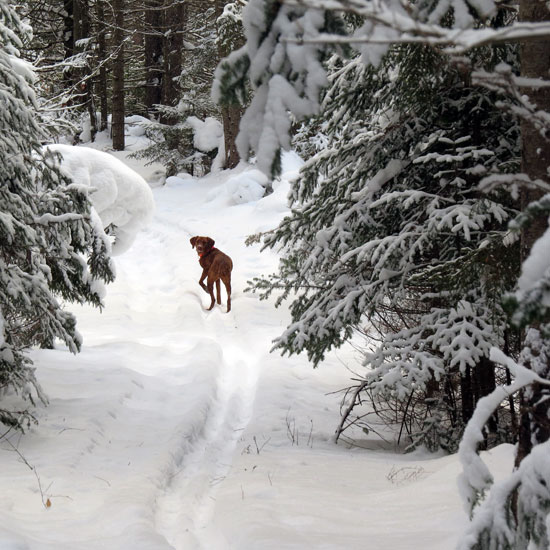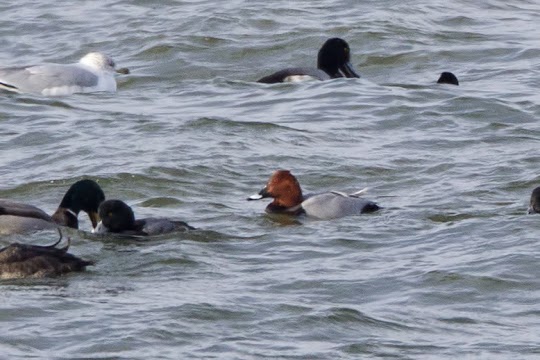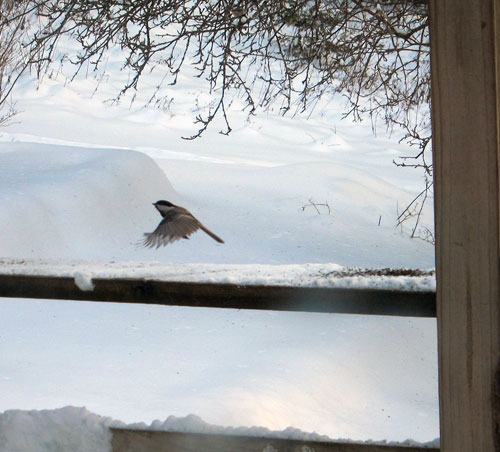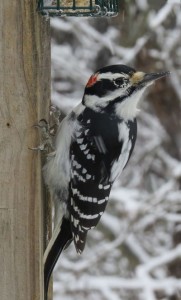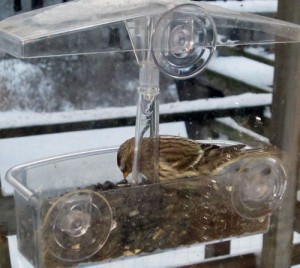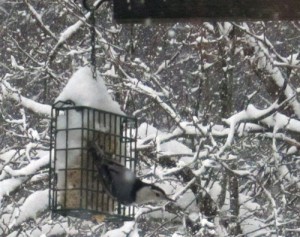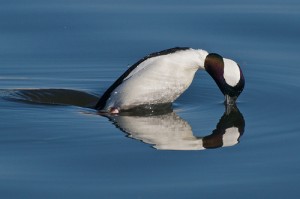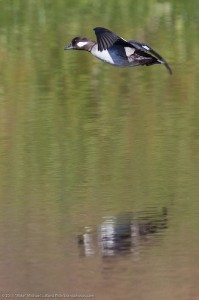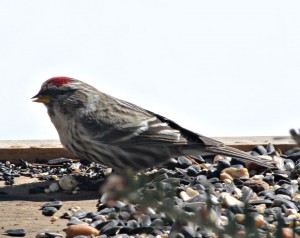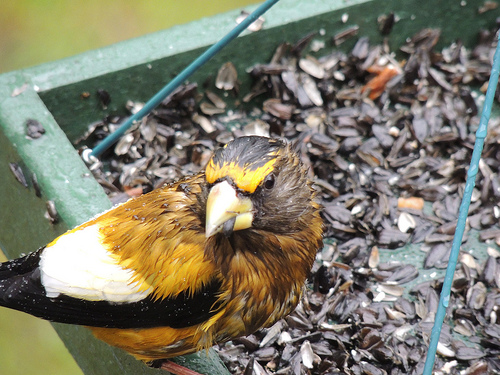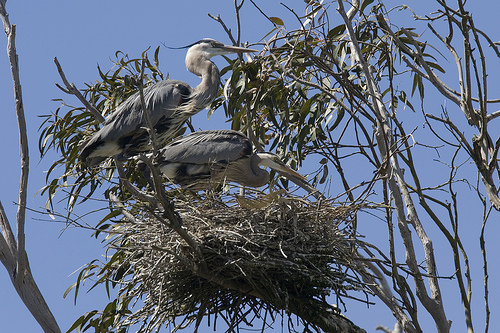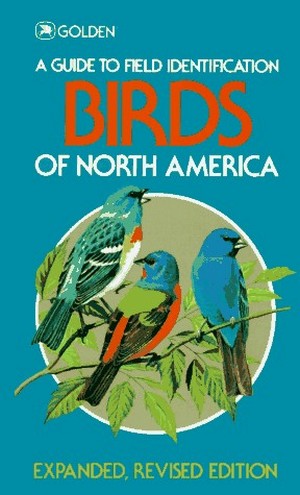We’ve had some wonderful powder snow and I’ve been able to break some trails in our woods and adjacent forest with snowshoes. I carry binoculars on every outing but with some sub-zero days and brisk winds, the birds have been a little sparse. Most of the action seems to be back at our feeders.
Yesterday, the wind quit, the sun came out for a while, and it was a perfect afternoon to get into the pine forests that surround us. Of course, my birding companion, Penny the Vizsla, was ready to roll. Just as I was getting my skis out of the garage, I noticed a couple of birds in trees down the driveway. I already had my binoculars under my windbreaker and so I took a look, and decided that I needed to get closer. Of course, Penny was already heading down the driveway. The two birds were high in a tree and as I got closer and past a tall spruce tree, I could see about twenty “golden globes” perched on the branches of a tamarack. I intially thought that they were female/juvenile Pine Grosbeaks. They flew off in a large group – spooked by the dog – and that was it. I realized later that they were Evening Grosbeaks when I read in The Crossley Guide that they ” form flocks that can often be spotted perched like Christmas lights on a tree….
We headed out on the trail that I had earlier packed with snowshoes and enjoyed a nice romp, seeing and hearing chickadees and the usual suspects like crows and blue jays. It was one of those outings where it was unimportant that I didn’t see any target birds — the fresh air, fresh snow, energetic dog, and perfect ski wax made it a wonderful birding trip. And perhaps next trip, we’ll spook some Ruffed Grouse or an owl. The Evening Grosbeaks just added icing to the outing.

